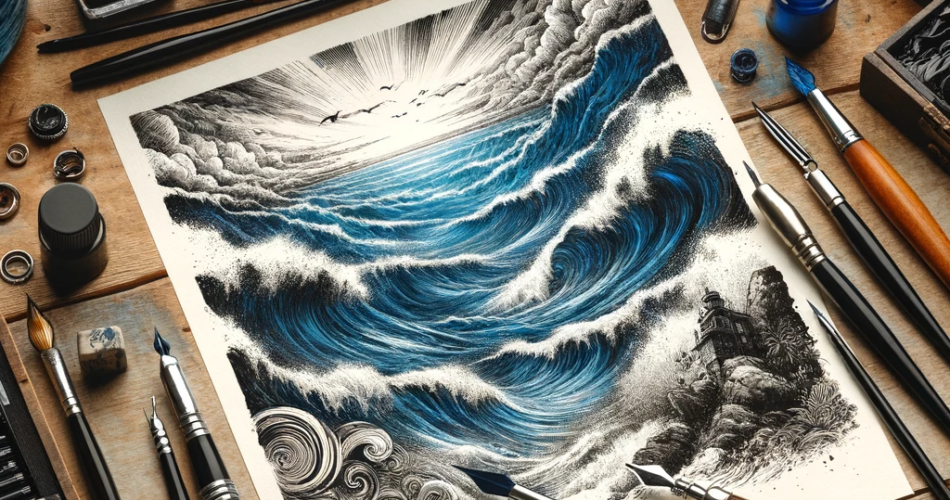Table of Contents
Introduction
Inking an ocean is an artistic endeavor that combines skill and a deep understanding of the sea’s ever-changing nature.
This guide will help you capture the essence of the ocean, from calm waters to tumultuous waves, in your ink drawings.
Key Takeaways:
- Techniques for creating a realistic ocean scene in ink.
- Selecting tools for capturing the ocean’s dynamic nature.
- Tips for depicting waves, depth, and the sea’s vastness.
- Enhancing your ocean illustrations with atmospheric effects.
Choosing Your Tools
1. Selecting Inking Tools:
Brush pens are ideal for creating fluid lines and washes, while fine liners can add details to waves and ripples.
2. Inks and Colors:
A range of blues from light to dark will help you capture the ocean’s many moods and tones.
The Inking Process
1. Establishing the Horizon:
Begin with a pencil sketch, marking the horizon line to separate the sky from the sea.
2. Creating Waves and Ripples:
Use brush pens to create the ocean’s surface. Start with broad strokes for larger waves and fine lines for smaller ripples.
3. Adding Depth:
Layer different shades of blue to create depth, with darker tones in deeper areas and lighter tones where the sun hits the water.
4. Detailing:
Use fine liners to add details such as foam, spray, and the texture of water.
Enhancing Your Artwork
1. Atmospheric Effects:
Consider adding elements like a setting sun or mist to create atmosphere and mood in your ocean scene.
2. Movement and Flow:
Focus on the direction and flow of the waves to convey the ocean’s movement and power.
FAQs on How to Ink an Ocean
Q: How can I make my ocean drawing look more realistic?
A: Study real ocean scenes for inspiration, focusing on how light plays on the water and how waves form and break.
Q: What is the best way to depict calm vs. rough seas?
A: For calm seas, use long, gentle strokes. For rough seas, use more vigorous, choppy strokes and darker colors to create a sense of turmoil.
Q: Can I mix different shades of blue in one drawing?
A: Absolutely! Mixing shades can add realism and depth to your ocean scene.
Q: How do I create a sense of scale in my ocean drawing?
A: Use elements like ships or birds to give viewers a reference point for the scale of the waves and the vastness of the sea.



